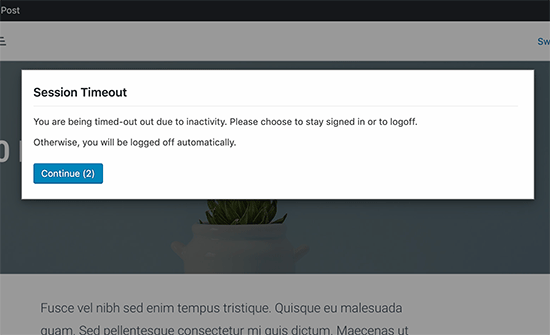

#React idle timer timeout for mozilla firefox how to#
To clear or cancel a timer, you call the clearTimeout() method, passing in the timer object that you created into clearTimeout().įor example, the code below shows how to properly clear a timer inside of a functional React component. For the longest time it didn't happen, and now it seems to start up again. The warning doesn't always to it to the same sites, and it almost happens randomly. Clearing setTimeoutĪ setTimeout timer must be cleared and handle properly, otherwise, you may experience adverse side effects in your code. I am not sure what else to do besides just uninstalling and reinstalling firefox, and I don't know if that will even help. nsHttpConnection should set it, based on a pref from nsHttpHandler (where all other prefs are read). nsSocketTransportService already allows to set it, and the mail protocols use it, but necko / HTTP never sets it. If you are idle for 5 seconds we are going to let the user know with a modal window and if the user is still idle after 5 seconds, the user will be logged out. When you log in with any username and password, dashboard displays with some user table. poll () allows a timeout - that should be set. This is a simple project which has two screens: login screen and dashboard screen.

We schedule a new setTimeout called timer when the App component mounts for the first time.Īs a result, the code inside of the setTimeout block runs after 1 second as indicated by the 1000 millisecond value that’s passed into the second parameter of the setTimeout method. Somewhere deep down (in nsSocketTransportService2.cpp), there's a poll (). If you want to learn more about Hooks, I recommend my tutorial on Simplifying Forms using React Hooks. Clear the global timeout once an operation is done in the Cloud Storage SDK. Our functional component runs the useEffect method when it first renders. The SDK no longer causes React Native to log a warning about deprecation of.


 0 kommentar(er)
0 kommentar(er)
